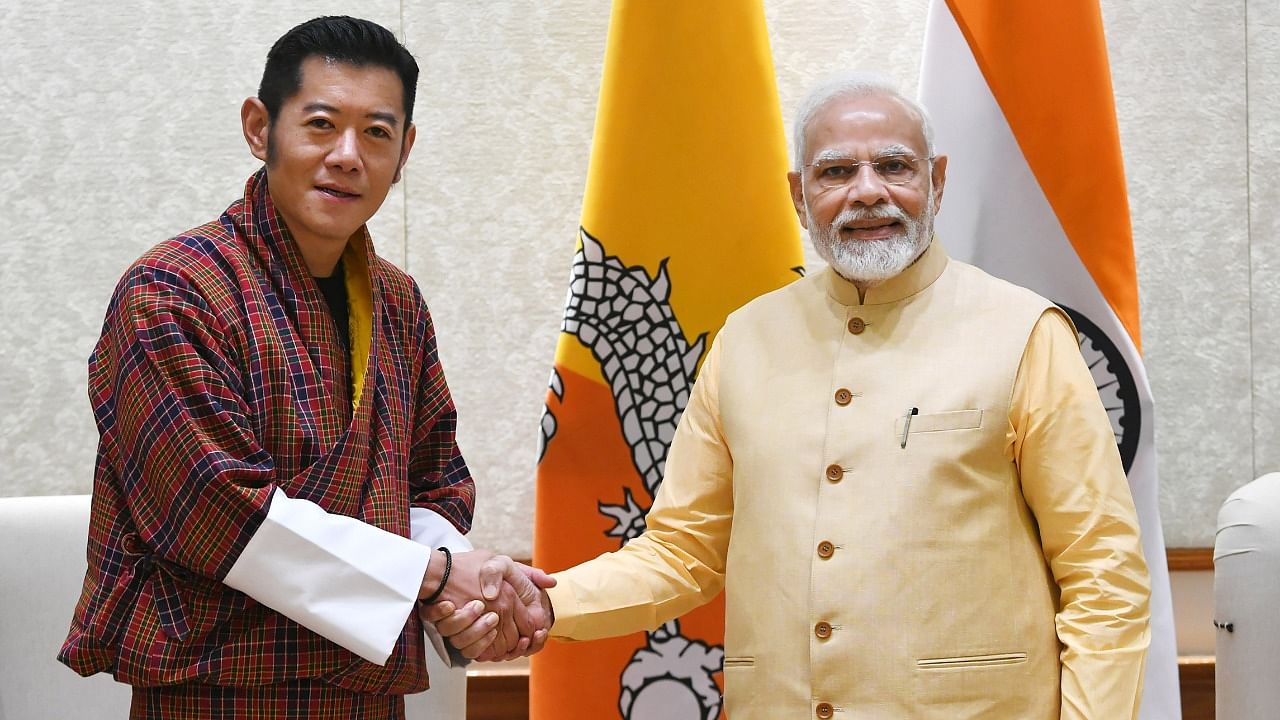
File photo of PM Narendra Modi with King of Bhutan Jigme Khesar Namgyel Wangchuck.
Credit: PTI Photo
New Delhi: The Centre on Wednesday cancelled Prime Minister Narendra Modi’s two-day visit to Bhutan citing “inclement weather at Paro airport”, even as cities in Odisha and West Bengal recorded their lowest ever maximum temperature in March following a few spells of rain and day-long overcast conditions.
“Due to ongoing inclement weather conditions over Paro airport, it has been mutually decided to postpone the State visit of Prime Minister to Bhutan on March 22-21, 2024. New dates are being worked out by the two sides through diplomatic channels,” the Ministry of External Affairs said.
The announcement for Prime Minister’s visit cancellation came hours after the MEA top brass gave a detailed account of his two-day programme. This would have been the third visit of PM Modi to Thimpu.
Satellite images show a massive cloud cover over eastern India stretching up to the hills. “This is a potential area for severe weather,” said a weatherman.
Bhubaneswar, Cuttack, Puri, Chandbali, Paradeep and Baripada have registered their lowest ever maximum temperature in March. In Puri and Cuttuck, it is the lowest in over 120 years whereas Bhubaneswar and Chandbali didn’t see such a March in the last 72 years.
The eastern metropolis of Kolkata recorded its second lowest maximum temperature in 54 years.
“There was an east-west trough (a low pressure zone) from north east Madhya Pradesh to Assam in lower level and a very strong north-south trough in higher level. As a result a large mass of cloud has formed. It brings a few spell of rainfall over eastern India. The cloud is still over eastern India as its movement from west to east is very slow. Hence an overcast condition remained throughout the day,” GK Das, a senior scientist from India Meteorological Department, Kolkata told DH.
“The difference of maximum and minimum temp at Kolkata is only 1.4°C. This is the possible reason for very low maximum temperature in eastern India,” he added.
Asked how the weather will be on Thursday, Das said, “The rainfall is likely to continue, but the maximum temperature is expected to rise by 4-5°C over eastern India. The north-south trough may move further east and the cloud mass will move accordingly. Rainfall is expected more in north Bengal compared to south Bengal.”
